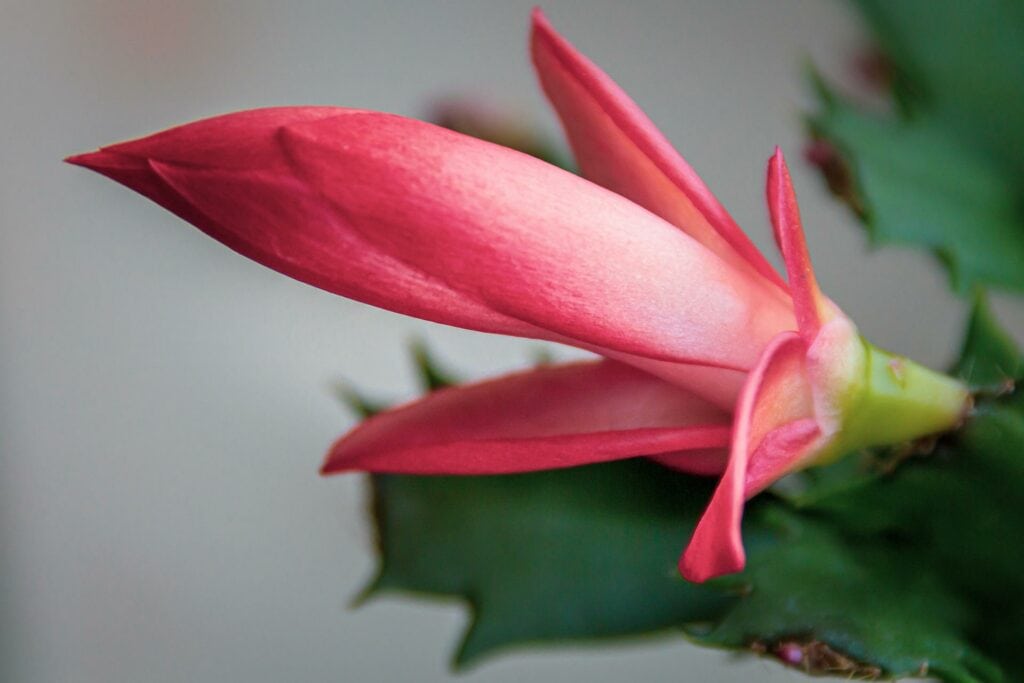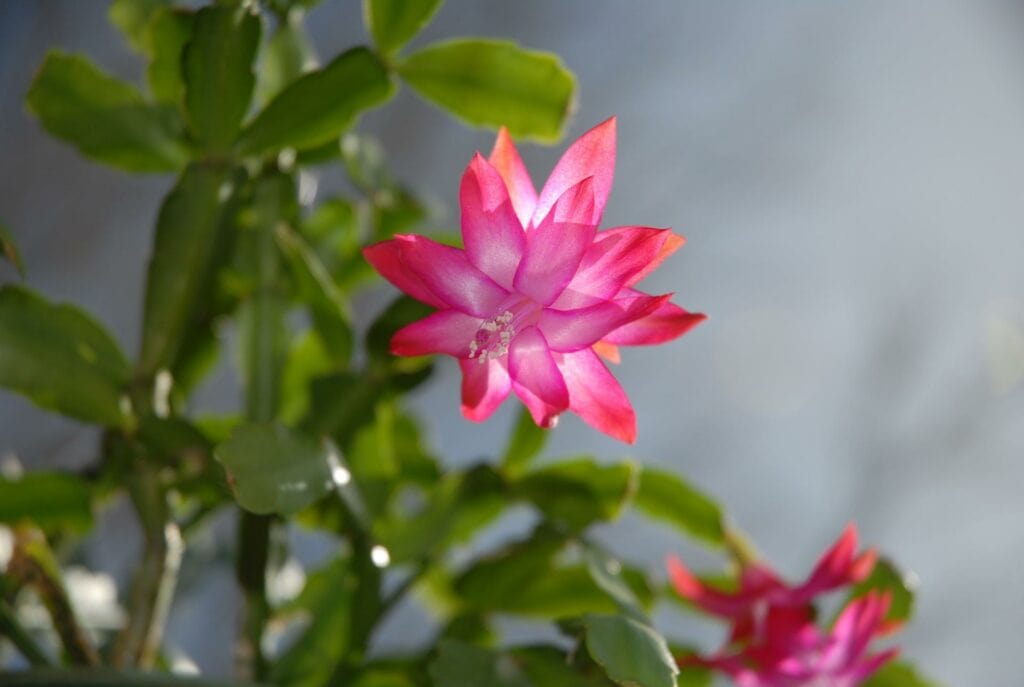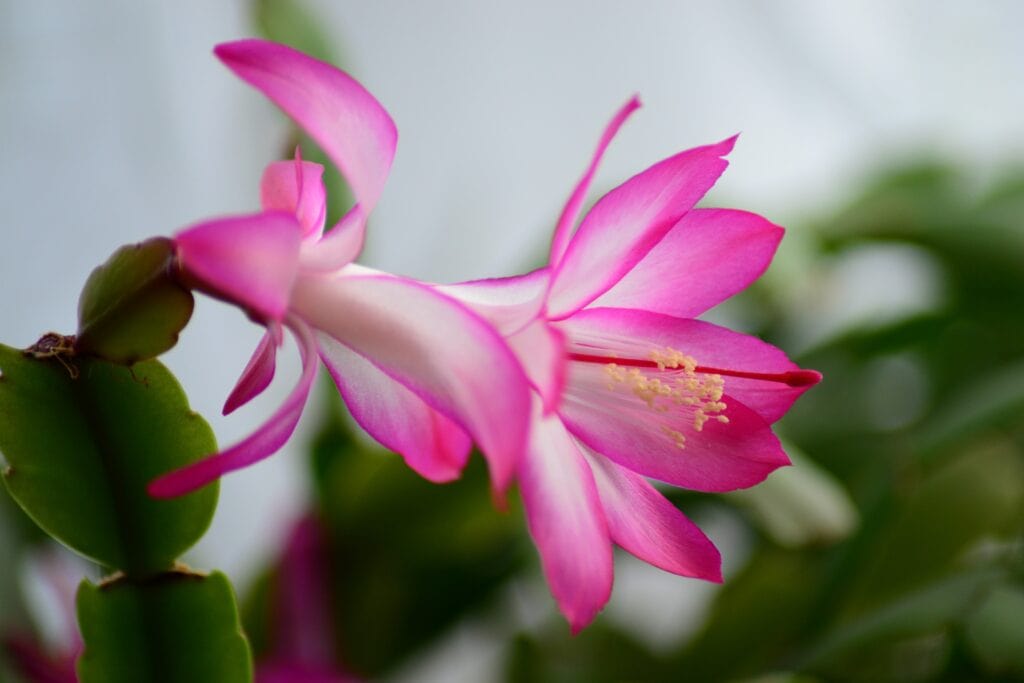Does a Christmas Cactus Like to Be Root Bound? Facts & FAQ
-
Pete Ortiz
- Last updated:

Often mistaken for the Easter or the Thanksgiving cactus, the Christmas cactus is one of the most beautiful and long-living houseplants in the US. On top of that, it’s easy to take care of and grows in poor soil. What about root bounding, though? How does this plant handle it? Does it like tight pots? The short answer is yes, it does. The cactus won’t fade, wither, or become squishy when root-bound.
With that said, you should still consider moving it to a bigger pot once in a while to ensure steady growth. How often should you do that? What will happen if you don’t? How long does this crowd-favored cactus last indoors? Is it poisonous to humans and pets? Read on to find out!
What Is Root Bounding in a Plant?
This widely-used gardening term describes a situation when the pot you originally planted the cactus in becomes too small for the roots. They keep going deeper and deeper into the soil in search of nutrients to grow but keep getting entangled with each other because they literally have nowhere to go. That’s when the roots start “poking” through the drain holes in the container trying to escape and find new soil.
Sometimes, they even “climb over” the top of the pot. As a result, the plant doesn’t get enough nutrients or water and starts to fade. When the roots reach the top of the pot, they’re very easy to spot. However, when they go in the opposite direction, you won’t be able to see that unless you physically lift the pot. So, make a habit of checking on the roots at least twice a year to make sure they’re not bounding.

How Should You Handle a Root Bound Christmas Cactus?
The Christmas cactus is a shrubby plant that can be as tall as 24 inches. And, it reaches 3–4 feet in width. It’s not particularly small and relies heavily on an intricate rooting system to grow. That’s exactly why root bounding is a common thing for it. But, unlike most cacti, this succulent likes it when the pot is a bit crowded. Do pay extra attention to the soil, however: if it’s drying faster than it used to be, that means the roots have taken over.
To protect the cactus from various diseases and to make sure it gets plenty of nutrients and water, get a bigger pot for it. Don’t rush it, though. If spring is a couple of months away, you should wait until then to move the Christmas cactus to a new container. This way, it will take the cactus very little time to “readjust” to the new pot size and soil and keep growing. Repotting it while the cactus is flowering is a bad idea!
Repotting: Doing It the Right Way
It’s recommended to transport the Christmas cactus to a new container every 3–4 years to keep it healthy. For the best results, move it to a pot that’s 2–3 inches bigger. We do have to warn you that repotting a Christmas cactus requires lots of care. It’s very easy to injure it while you’re busy removing it from the old pot. To avoid causing damage to it, use a hammer to break the pot.
This way, you’ll be able to free the soil and the plant easily. Also, consider refreshing the soil once every 1–2 years. This isn’t mandatory but will breathe new life into the plant. Use potting soil for cacti/succulents to stimulate growth; add fertilizer 8–10 weeks after repotting. Water the soil deeply and put it in a shady spot. At this point, the cactus has probably gotten really big and has some “extra” stems that you can cut for propagation.

Growing a Christmas Cactus Indoors: A Quick Guide
Start by planting it in well-drained, slightly moist, and loamy soil. Don’t forget about fertilizing: do it at least once in 25–30 days during the winter months to stimulate blooming right when the holiday starts. As for the spring-early fall period, it would be best to “cheer it up” with a potassium- and nitrogen-rich fertilizer every 2 weeks. Water the cactus once in 2–3 weeks, and it will grow and prosper.
The Christmas cactus prefers indirect sunlight (it will burn when exposed to direct sunlight for long) and thrives in a daytime temperature of 60–70 degrees F. Last but not least, keep the pot in a room with average humidity levels (50–60). Unlike most cacti, this species won’t get soft and squishy when moisture levels reach 70–80, but it does grow best in relatively dry conditions.
How Long Does the Christmas Cactus Last?
Like most species in the Cactaceae family, this lovely plant has a rather impressive lifespan: up to 100 years. But that’s how long it lives in the wilderness. When grown as a houseplant, it will go on for 20–30 years—still a very impressive result for a perennial plant! Besides, you can keep it indoors 365 days a year and never move it to a garden outside. As for the lovely blooms, on average, they only last for 1–2 weeks.
However, if you’re good at maintenance and take proper care of it, the cactus will remain in flower for 1–2 months, serving as the perfect decoration for the Christmas holidays and beyond. To maximize the lifespan of this succulent plant, grow it in soil with neutral acidity, water it adequately, and do your best to protect it from physical damage (especially if you have pets in the house).

Not Your Average Cactus
There are thousands of cacti species on the planet, and not all of them are thick, spiky, and green plants that grow in the desert. For example, the Christmas cactus is native to Brazil (the local rainforests, to be exact) and won’t survive without regular watering. Plus, it’s used to growing in the shade and doesn’t tolerate scorching sunlight. Do keep this in mind when caring for it to ensure a long and prosperous lifespan.
And one more thing: while the Christmas cactus is quite similar to the Thanksgiving and the Easter cacti, they’re NOT the same thing. They are different in size, shape (especially the leaves), and color. More importantly, as the names suggest, these cacti bloom at different times of the year.
Can You Eat It? Is It a Healthy Food?
If you want to try something exotic, you can, indeed, eat Christmas cactus blooms. And the best thing about these fruits—they aren’t poisonous in any way. The blooms are bright, colorful, and, when grown right, have a nice taste. However, the taste will vary greatly depending on the cultivar. The harvest time also has a huge effect on the flavor. Ideally, it should be mildly sweet, like you’re eating a kiwi or a dragon fruit.
For that, harvest the blooms while the buds are still closed unless you like the somewhat rough nature of fully grown fruits. In any case, this is an acquired taste—some people like it, while others don’t. Oh, and you should only eat a couple of these fruits at a time. If you consume too many, that might cause an upset stomach or nausea. The side effects will be mild, though.

Is the Christmas Cactus Safe for Pets?
Technically, yes, it is safe. But, we strongly recommend against feeding a cat or dog Christmas cactus. Just like most cacti plants, it will be very hard for your pet’s digestive system to handle. As a result, they’ll vomit and have diarrhea. The symptoms will be worse compared to what the average human will experience. So, again, keep your feline and canine creatures away from this otherwise lovely cactus.
Conclusion
The Christmas cactus is incredibly popular in American households, especially right around the holidays. It lasts for many decades, takes little time, effort, and investments to grow, and has edible buds. On top of that, it’s visually stunning, thanks to the colorful, vibrant pink/lilac flowers. And while it might not look the part, the Christmas cactus is quite tough and likes to be root bound.
You will have to move it to a larger container eventually, of course, but the plant won’t die when the roots run out of space and start “piling up” on top of each other. Keep a close eye on the cactus, make sure it gets enough indirect sunlight, and only transport it when the time is right!
- The secret to getting a Christmas cactus to bloom
- How often should I water a Christmas cactus?
- University of Arizona – Christmas Cactus
- Can you eat Christmas cactus blooms?
- How to Care for Christmas Cactus Year-Round
- Control light and Christmas cactus will bloom
- How And When To Repot Christmas Cactus Plants
- Do Christmas cactus like to be rootbound?
- How to Repot a Christmas Cactus
- Almanac – Christmas Cactus
Featured Image Credit: chakoteh, Pixabay
Contents


